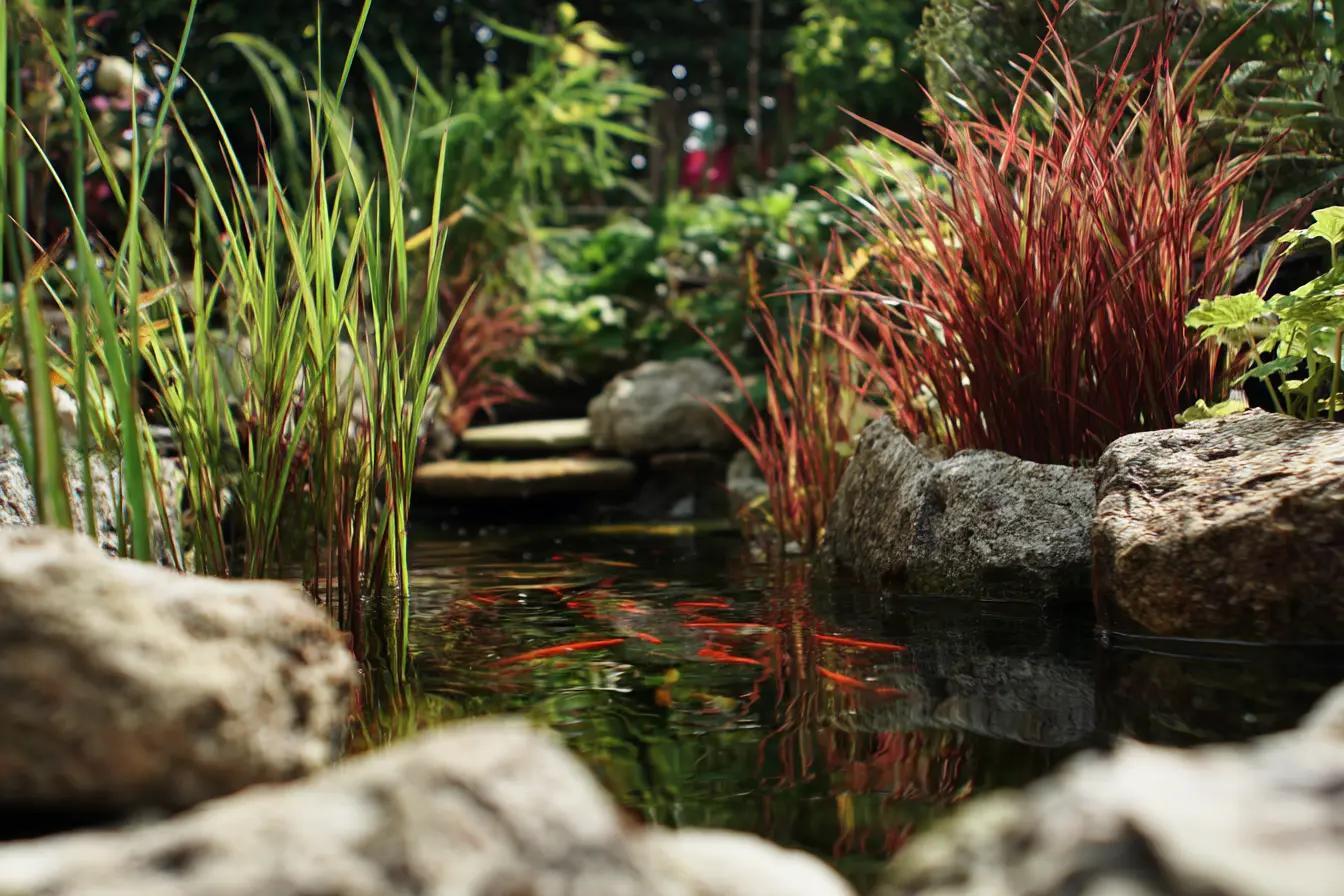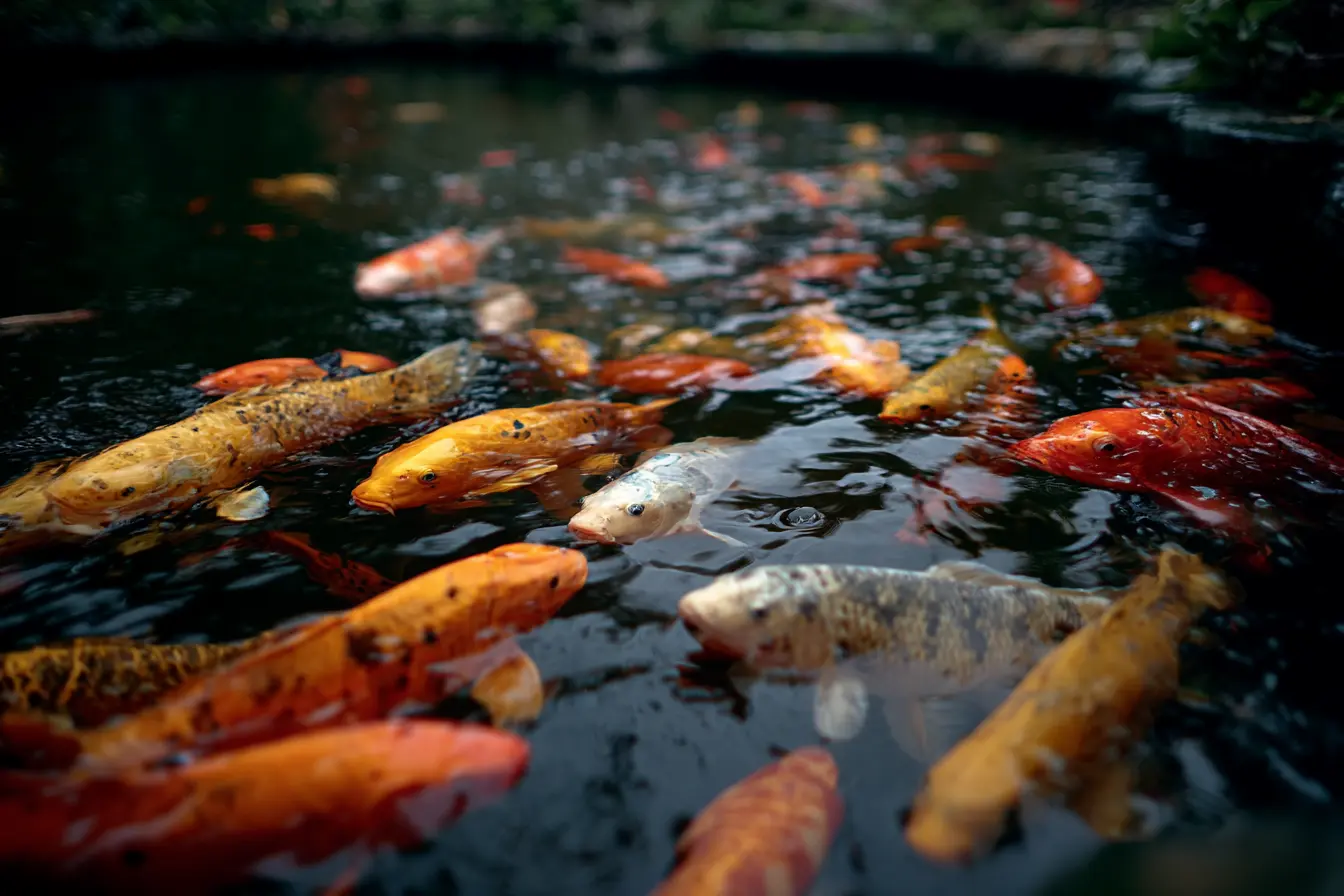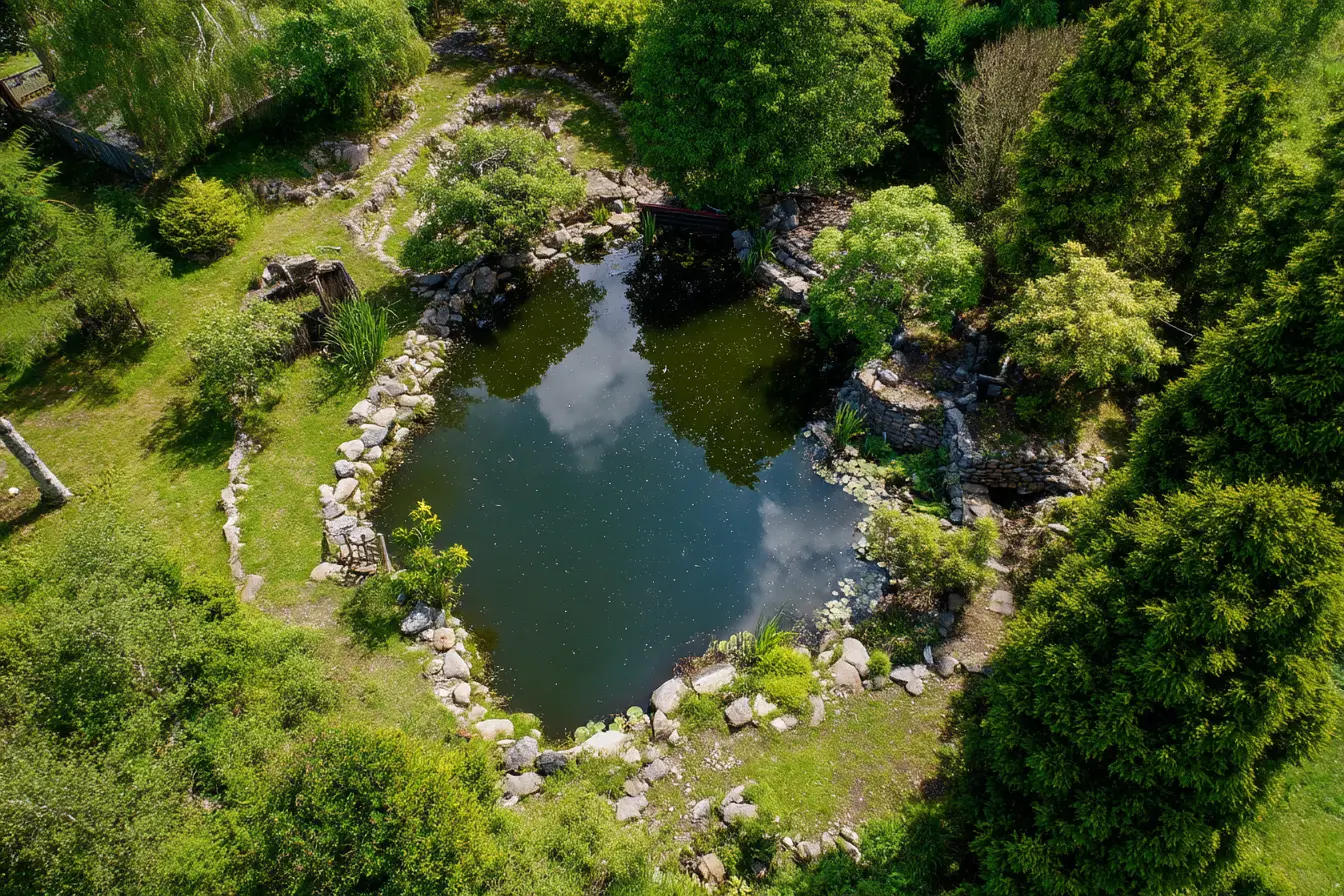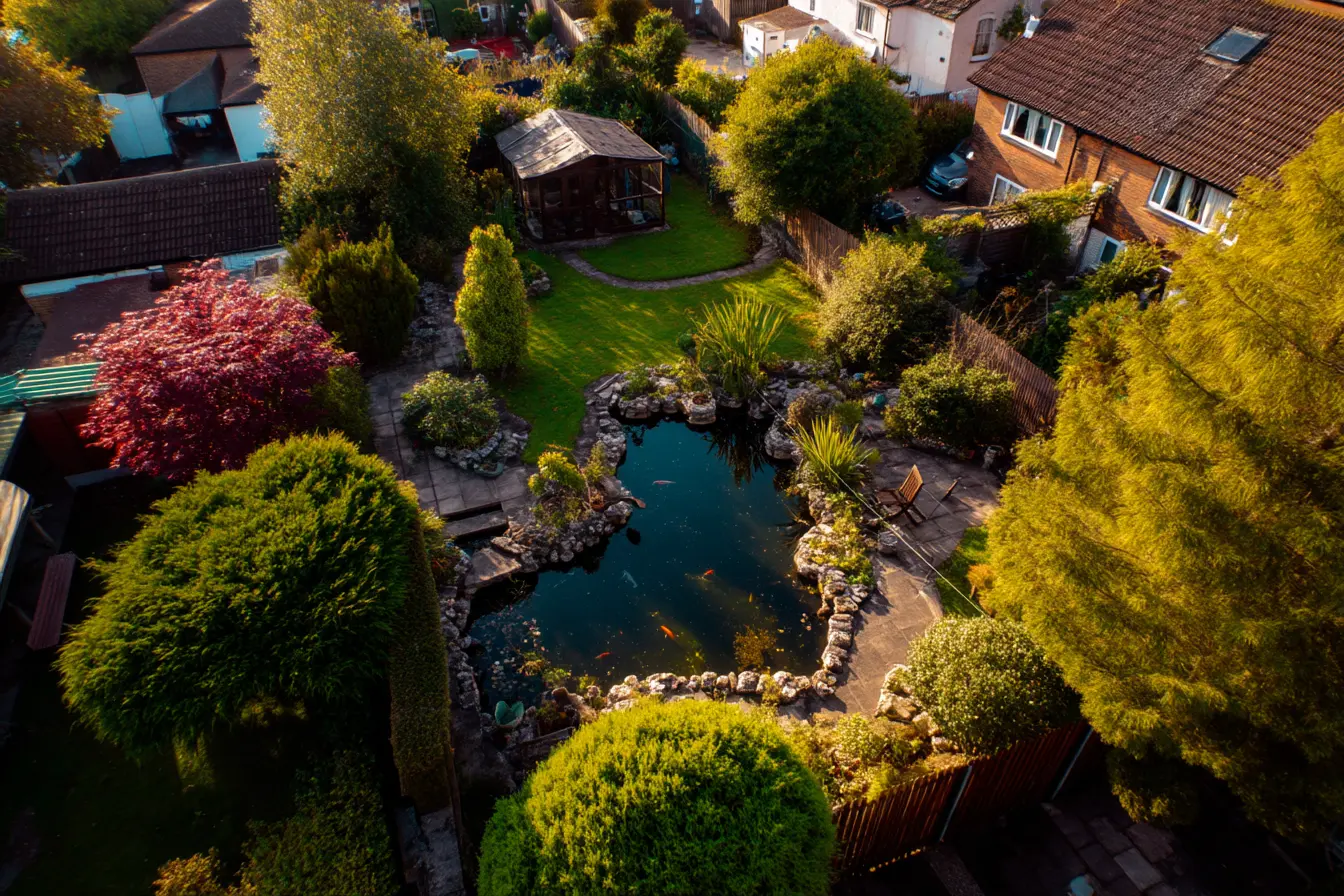
Choosing Aquatic Plants for a Decorative Garden Fish Pond: A Complete Guide
Aquatic plants are an essential part of any decorative garden fish pond. They don’t just make the pond look beautiful — they also play a vital role in maintaining water quality, providing oxygen, offering shade and shelter for fish, and helping to reduce algae growth. Choosing the right mix of plants will support a balanced and healthy ecosystem.
This guide will walk you through everything you need to know about selecting, planting, and maintaining aquatic plants for your decorative fish pond.
Why Aquatic Plants Matter
Aquatic plants serve several key functions in a garden fish pond:
- Oxygenation: Submerged plants release oxygen into the water, which is crucial for fish and beneficial bacteria.
- Filtration: Many aquatic plants absorb nutrients such as nitrates and phosphates, helping to prevent algae blooms.
- Shade and shelter: Floating leaves reduce sunlight penetration, cooling the water and giving fish places to hide.
- Aesthetic value: Aquatic plants bring colour, texture, and seasonal interest to the pond.
Types of Aquatic Plants
Aquatic plants are generally grouped into four main categories based on their growing habits and functions in the pond.
Oxygenating Plants (Submerged)
These plants grow entirely underwater and are essential for maintaining oxygen levels and improving water clarity.
Popular choices:
- Hornwort (Ceratophyllum demersum): Free-floating or anchored, fast-growing and hardy.
- Water crowfoot (Ranunculus aquatilis): Delicate white flowers, oxygenates well.
- Elodea canadensis: Easy to grow, ideal for small and medium ponds.
Positioning: Deep or middle areas of the pond.
Tip: Plant in aquatic baskets filled with gravel or let them float freely depending on the species.
Floating Plants
These float freely on the surface and provide shade, helping to control algae and reduce water temperature during summer.
Popular choices:
- Frogbit (Hydrocharis morsus-ranae): Small, rounded leaves with tiny white flowers.
- Water lettuce (Pistia stratiotes): Rosette-like leaves, good shade provider (suitable in warm months).
- Water hyacinth (Eichhornia crassipes): Ornamental with lilac blooms (note: not fully hardy in the UK).
Positioning: Free-floating on pond surface.
Tip: Avoid overuse — too many floating plants can block too much light for submerged and marginal plants.
Marginal Plants
These grow in shallow water along the edges or on pond shelves, often with roots submerged and foliage above water.
Popular choices:
- Marsh marigold (Caltha palustris): Bright yellow spring blooms, native and hardy.
- Pickerel weed (Pontederia cordata): Tall spikes of purple flowers in summer.
- Water mint (Mentha aquatica): Aromatic leaves, attractive to pollinators.
- Yellow flag iris (Iris pseudacorus): Striking yellow flowers, adds vertical interest.
Positioning: In 5–15 cm of water on pond shelves or shallows.
Tip: Use planting baskets to control spreading and make seasonal maintenance easier.
Deep Water Plants
These plants have their roots anchored in soil at the bottom of the pond, but leaves and flowers float on the surface.
Popular choices:
- Water lilies (Nymphaea spp.): Iconic pond plants offering shade and beauty; available in various colours and sizes.
- Lotus (Nelumbo spp.): Exotic and bold, best suited to large, warm ponds.
Positioning: 30–90 cm deep, depending on variety.
Tip: Choose a hardy variety of water lily suited to your pond's depth and size — dwarf types for small ponds.
How to Choose the Right Plants for Your Pond
Consider Your Pond Size and Depth
- Small ponds: Choose dwarf or compact varieties, avoid aggressive spreaders.
- Medium to large ponds: Can accommodate larger plants like full-sized water lilies or irises.
Sunlight Availability
Most aquatic plants thrive in full sun. Ensure your pond gets at least 4–6 hours of direct sunlight per day for healthy growth and flowering.
Fish Compatibility
- Avoid delicate plants if you keep large koi, as they may uproot or eat them.
- Use gravel-topped planting baskets to prevent fish disturbing the soil.
- Provide a mix of plants to offer hiding spots and reduce stress in fish.
Aesthetic Preferences
Mix textures, heights, and bloom times for year-round interest:
- Combine tall marginals with trailing or creeping species.
- Use water lilies for summer flowering and shade.
- Choose native species to create a naturalistic look.
Planting Tips and Techniques
- Use aquatic baskets filled with specialist aquatic compost or heavy loam, topped with washed gravel to anchor the soil.
- Don’t use regular potting compost — it can be too nutrient-rich and may cloud the water.
- Rinse plants before adding them to remove any pests or unwanted hitchhikers.
- Submerge slowly to avoid disturbing the soil.
Maintenance and Care
- Prune regularly: Remove dead leaves and faded flowers to prevent decay in the water.
- Divide overcrowded plants: Do this in spring or early autumn to maintain healthy growth.
- Remove excess floating plants: They can quickly cover the surface and limit light.
- Check for pests: Watch for aphids or snails on leaves and manage as needed.
- Seasonal care: In autumn, thin out plants and remove fallen leaves to prepare for winter.
Plants to Avoid
Some plants are invasive or unsuitable for ornamental ponds. Avoid:
- Parrot’s feather (Myriophyllum aquaticum)
- Floating pennywort (Hydrocotyle ranunculoides)
- Canadian pondweed (Elodea nuttallii)
- New Zealand pygmyweed (Crassula helmsii)
These can spread aggressively and are banned from sale in the UK.
Final Thoughts
Choosing the right aquatic plants is key to creating a beautiful and healthy decorative fish pond. By including a thoughtful mix of oxygenators, floaters, marginals, and deep-water species, you’ll create a balanced ecosystem that supports fish, prevents algae, and provides visual interest throughout the year.
With the right care, your pond will become a vibrant and tranquil centrepiece of your garden — full of colour, life, and movement.
Vets near you
Speciality vets
- Aquatics vet specialists
- Birds vet specialists
- Camelids vet specialists
- Cats vet specialists
- Cattle vet specialists
- Deer vet specialists
- Dogs vet specialists
- Equines vet specialists
- Exotic vet specialists
- Goats vet specialists
- Pigs vet specialists
- Poultry vet specialists
- Sheep vet specialists
- Small Mammals vet specialists
- Wild vet specialists



